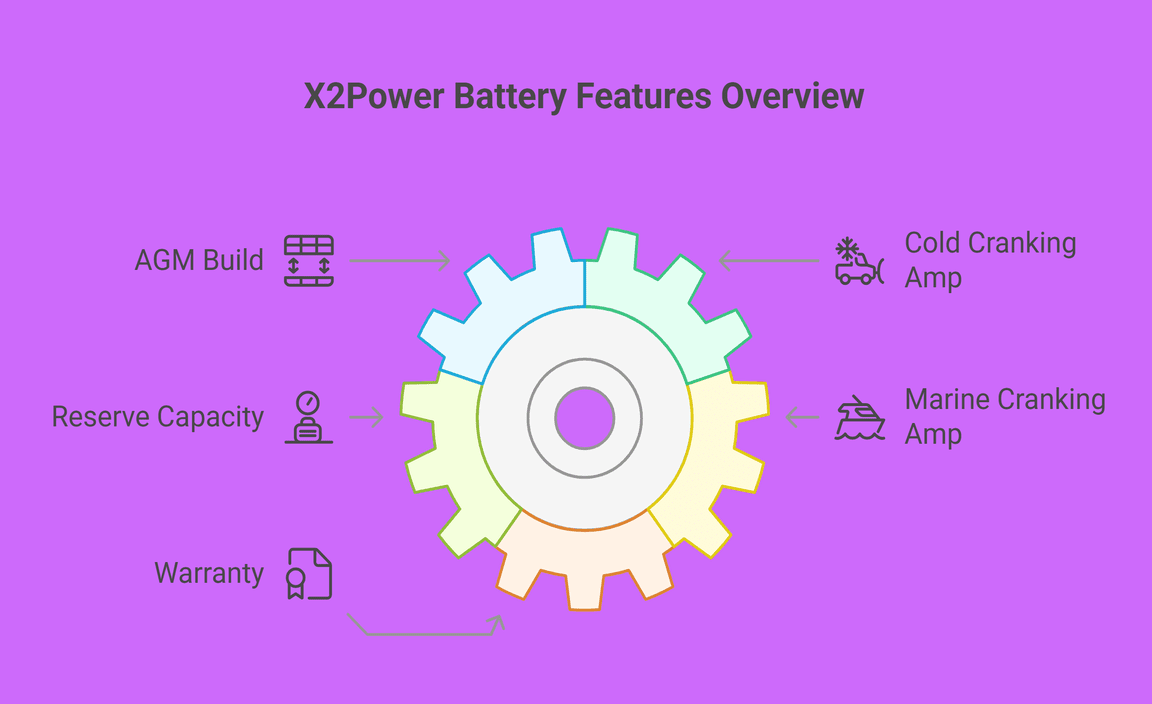For your 2013 Hyundai Elantra, you’ll most commonly need a Group Size 35 car battery. Always double-check your owner’s manual or a reliable auto parts store’s lookup tool to confirm fitment and essential specifications like Cold Cranking Amps (CCA) and Reserve Capacity (RC) for optimal performance and longevity.
Is your 2013 Hyundai Elantra acting sluggish or refusing to start? A weak or dead battery is a super common reason, and it can be a real headache. Figuring out the right replacement battery might seem tricky with all the numbers and codes out there, but don’t worry! I’m here to break it down, step-by-step, so you can get back on the road with confidence.
Replacing your car battery is a task many drivers can tackle themselves with the right guidance. Understanding the correct battery size, and what those other important ratings mean, is the first step to a successful DIY job. We’ll cover everything you need to know, from identifying the perfect battery for your Elantra to keeping it in tip-top shape.
Let’s dive in and make sure your Elantra gets the power it needs!
Why Battery Size Matters for Your 2013 Hyundai Elantra
When you’re looking for a new battery for your 2013 Hyundai Elantra, size isn’t just about fitting the tray. It’s about ensuring the battery has the right physical dimensions, terminal placement, and electrical power to keep your car running smoothly and reliably.
Understanding Battery Group Sizes
Car batteries come in different “group sizes.” This is a standard system from the Battery Council International (BCI) that tells you the physical dimensions (length, width, height) and the terminal post configuration (where the cables connect and their orientation). Using the wrong group size can mean:
- The battery won’t fit in the battery tray.
- The hold-down clamp won’t secure the battery properly.
- The battery cables won’t reach the terminals or are in awkward positions.
- Corrosion or damage could occur from constant vibration if not secured.
For the 2013 Hyundai Elantra, the most common and recommended group size is Group Size 35.
Beyond Size: Key Battery Ratings
While the group size is crucial for fit, other specifications ensure your Elantra gets enough power, especially in tough conditions. These are vital for reliable starting and powering your car’s electronics.
Cold Cranking Amps (CCA)
This is perhaps the most important electrical rating. CCA measures the number of amps a battery can deliver at 0°F (-18°C) for 30 seconds while maintaining a voltage above 7.2 volts. The higher the CCA, the better the battery is at starting your engine in cold weather. Your 2013 Elantra needs a battery with adequate CCA to turn over the engine reliably, especially if you live in a climate with cold winters.
What to look for: Generally, aim for a CCA rating that meets or exceeds the original manufacturer’s recommendation. For a 2013 Elantra, this is often in the range of 400-600 CCA, but always check.
Reserve Capacity (RC)
Reserve Capacity (RC) tells you how long (in minutes) a new, fully charged battery can deliver 25 amps at 80°F (27°C) before its voltage drops below 10.5 volts. This is important because it indicates how long your car’s accessories (like lights, radio, and other electronics) can run if the alternator fails or if you’re idling for an extended period.
What to look for: A higher RC is generally better, providing more buffer. Look for a rating that suits your driving habits and potential needs.
Voltage (V)
Virtually all standard passenger car batteries operate at 12 volts. Your 2013 Elantra uses a 12-volt system, so you’ll be looking for a 12V battery. This is pretty standard, but it’s good to be aware of.
Identifying the Correct Battery for Your 2013 Hyundai Elantra
Finding the exact battery that fits your 2013 Hyundai Elantra involves a couple of simple steps. Don’t guess – knowing for sure saves time and prevents mistakes.
Method 1: Check Your Owner’s Manual
Your Hyundai Elantra’s owner’s manual is the definitive source for all manufacturer-recommended specifications, including the battery. It will clearly state the required BCI group size and may even suggest specific performance ratings.
How to do it:
- Locate your owner’s manual in your glove compartment.
- Flip to the section on maintenance or specifications.
- Look for information regarding the car battery.
Method 2: Consult an Auto Parts Store’s Lookup Tool
Most reputable auto parts stores (both online and in-person) have extensive databases. You can enter your car’s year, make, and model, and they will show you compatible batteries.
How to do it:
- Visit the website of a major auto parts retailer (e.g., AutoZone, Advance Auto Parts, O’Reilly Auto Parts).
- Find their “Find Parts” or “Vehicle Selector” tool.
- Enter “2013”, “Hyundai”, and “Elantra”.
- The results will show compatible battery group sizes and specific models.
- If you’re in the store, ask an associate to use their lookup tool. You can also often find the same tool on their app.
Method 3: Physically Inspect Your Current Battery
If your current battery is still in the car and legible, you can often find the group size printed on a label on the battery itself. This is a quick visual check.
How to do it:
- Safely pop your car’s hood.
- Locate the battery (usually on one side of the engine bay).
- Look for a sticker or molded label on the top or side of the battery.
- The BCI group size (e.g., “Group 35”) should be clearly displayed.
What to Expect for a 2013 Hyundai Elantra
As mentioned, Group Size 35 is the most commonly specified battery for the 2013 Hyundai Elantra. This size typically features:
- Dimensions: Around 9.1 inches (L) x 6.9 inches (W) x 8.9 inches (H).
- Terminal Type: Standard SAE posts.
- Terminal Configuration: Usually positive terminal on the right side when viewed from the front.
While Group Size 35 is standard, always verify. There might be slight variations depending on the specific engine or trim level, though this is less common for battery requirements.
Recommended Specifications for Your 2013 Elantra Battery
Once you know you need a Group Size 35 battery, let’s look at the key performance indicators to aim for.
| Specification | Recommended Range for 2013 Hyundai Elantra | Why it Matters |
|---|---|---|
| BCI Group Size | 35 | Ensures physical fit in the battery tray and correct terminal placement. |
| Cold Cranking Amps (CCA) | 400-600 CCA | Critical for starting the engine, especially in cold temperatures. Higher is generally better within reason. |
| Reserve Capacity (RC) | 75-100 minutes | Indicates how long the battery can power vehicle accessories if the alternator fails. |
| Voltage | 12V | Standard for modern passenger vehicles. |
| Terminal Type | SAE Top Post | Standard automotive terminals that your car’s cables are designed to connect to. |
Comparing Battery Types
When buying a new battery, you’ll notice different types: standard flooded, enhanced flooded batteries (EFB), and absorbed glass mat (AGM) batteries. For a 2013 Elantra, a standard flooded battery is usually sufficient. However, if your car has advanced features or you simply want longer life and better performance, an AGM battery might be an upgrade, though they are generally more expensive.
Standard Flooded: The most common and affordable. Requires occasional maintenance (checking water levels) if there are removable caps, though many are “maintenance-free.”
Absorbed Glass Mat (AGM): More robust, spill-proof, and offers better vibration resistance and longer lifespan. Preferred for vehicles with start-stop technology or high electrical demands.
For a standard 2013 Elantra without advanced electrical systems, a good quality Group Size 35 flooded battery with sufficient CCA and RC will serve you well.
When to Replace Your 2013 Hyundai Elantra Battery
Batteries don’t last forever. Knowing the signs of a dying battery can save you from being stranded.
Common Warning Signs
- Slow Engine Crank: The engine turns over slower than usual when you try to start it. This is the most classic symptom.
- Clicking Sound When Turning Key: If you hear a rapid clicking noise but the engine doesn’t crank, it often means the battery is too weak to engage the starter motor.
- Dim Lights: Headlights, interior lights, or dashboard lights appear dimmer than usual, especially when the engine is off or at idle.
- Electrical Issues: Power windows move slower, the radio acts up, or dashboard warning lights flicker or come on unexpectedly.
- Swollen or Leaking Battery Case: The battery case looks puffy or you see corrosion and fluid around it. This is a serious sign of internal damage.
- Old Age: Car batteries typically last 3-5 years. If yours is approaching or past this age, it’s wise to consider replacement proactively. Check the manufacturing date sticker on the battery.
You can get your battery tested for free at most auto parts stores. They have specialized equipment that can check its health and cranking power. This is a smart move before a potential roadside emergency.
How to Replace Your 2013 Hyundai Elantra Battery (DIY Guide)
Replacing your own car battery can save you money and is a rewarding DIY project. Safety first, always!
Tools and Materials You’ll Need
- Replacement Battery: The correct Group Size 35 battery (verified!).
- Socket Set or Wrench Set: Typically 10mm and 12mm or 1/2-inch and 3/8-inch sockets/wrenches for battery terminals and hold-down clamp.
- Gloves: Protect your hands from dirt and battery acid.
- Safety Glasses: Essential eye protection against acid splashes.
- Wire Brush or Battery Terminal Cleaner: To clean corroded terminals.
- Anti-Corrosion Spray or Dielectric Grease: For protecting terminals after installation.
- Painters Tape or Marker: To label cable positions if unsure (though typically they can only go one way).
- Towel or Shop Rag: For cleanup.
Step-by-Step Replacement Process
Important Safety Reminder: Always wear safety glasses and gloves. Batteries contain corrosive acid. Ensure the engine is off and the car is parked on a level surface. Avoid smoking or open flames near the battery, as they can produce flammable hydrogen gas.
- Preparation: Park your car on a level surface and engage the parking brake. Turn off the engine and remove the keys from the ignition. Open the hood and locate the battery.
- Disconnect the Negative Terminal First: Using your wrench, loosen the nut on the clamp for the NEGATIVE (-) terminal (usually black). Gently twist and pull the cable off the terminal post. Tuck it away so it can’t accidentally touch the battery post. Why negative first? This prevents accidental short circuits if your wrench touches the car’s metal body while you’re working on the positive terminal.
- Disconnect the Positive Terminal: Now, loosen the nut on the clamp for the POSITIVE (+) terminal (usually red). Twist and pull the cable off the terminal post.
- Remove the Battery Hold-Down Clamp: Locate the clamp that secures the battery in its tray. This might be a bracket at the base of the battery or a clamp across the top. Use the appropriate socket or wrench to remove the bolts or nuts holding it in place. Keep these parts safe!
- Remove the Old Battery: Carefully lift the old battery straight up and out of the tray. Batteries are heavy, so use proper lifting techniques. If it’s difficult, ensure all clamps are removed and check for any hidden securing mechanisms.
- Clean the Battery Tray and Terminals: Before installing the new battery, clean out any dirt, debris, or corrosion from the battery tray. Use a wire brush or battery terminal cleaner to thoroughly clean the inside of the cable clamps. A clean connection is vital for good electrical flow.
- Install the New Battery: Carefully place the new battery into the tray, ensuring it’s oriented correctly so the positive and negative terminals line up with where the cables will reach.
- Secure the Battery: Reinstall the battery hold-down clamp and tighten its bolts or nuts. The battery should be snug and not move around, but don’t overtighten.
- Connect the Positive Terminal First: Place the POSITIVE (+) cable clamp onto the positive terminal post. Tighten the nut securely.
- Connect the Negative Terminal Last: Place the NEGATIVE (-) cable clamp onto the negative terminal post. Tighten the nut securely.
- Apply Anti-Corrosion Protection: Spray a thin layer of anti-corrosion spray or apply a small amount of dielectric grease to the terminals. This helps prevent corrosion and ensures a good connection over time.
- Final Checks: Ensure all connections are tight and the battery is securely held down. Close the hood.
- Start Your Car: Turn the key and start your Elantra. It should start up more readily than before!
Recycling Your Old Battery: Never throw an old car battery in the regular trash. Take it to an auto parts store, a recycling center, or a waste disposal facility that accepts them. Most places that sell car batteries will take your old one for recycling, often providing a credit or at least handling it legally and responsibly.
Battery Maintenance Tips for Longevity
Even “maintenance-free” batteries benefit from occasional checks. Proper care can extend the life of your new battery.
- Keep Terminals Clean: Regularly inspect the battery terminals for any signs of white or bluish powdery corrosion. Clean them with a wire brush and a mixture of baking soda and water if needed.
- Ensure Secure Connections: Make sure the battery cables are tight on the terminals. Loose connections can cause starting problems and drain the battery.
- Check for Damage: Periodically look for any cracks, leaks, or bulging on the battery case. If you notice any, the battery should be replaced immediately.
- Avoid Deep Discharges: Try not to leave lights or accessories on with the engine off for extended periods, as this can significantly drain the battery.
- Secure Hold-Down: Ensure the battery is firmly secured in its tray. Excessive vibration can damage the battery internally.
- Proper Charging: If your car sits for long periods, consider using a battery tender or trickle charger to keep it topped up.
For more in-depth technical information on battery testing, you can refer to resources like the U.S. Department of Energy’s information on vehicle battery testing and maintenance.
Frequently Asked Questions (FAQ)
Q1: What happens if I buy the wrong size battery for my 2013 Hyundai Elantra?
A1: If the battery is too large, it won’t fit in the tray. If it’s too small, it may not be secured properly, leading to damage from vibration. Incorrect terminal placement or orientation can also prevent your cables from connecting or cause dangerous short circuits.
Q2: How do I read the date code on my car battery?
A2: Battery manufacturers use date codes, often a letter for the month (A=Jan, B=Feb, etc.) and a number for the year (e.g., ‘3





